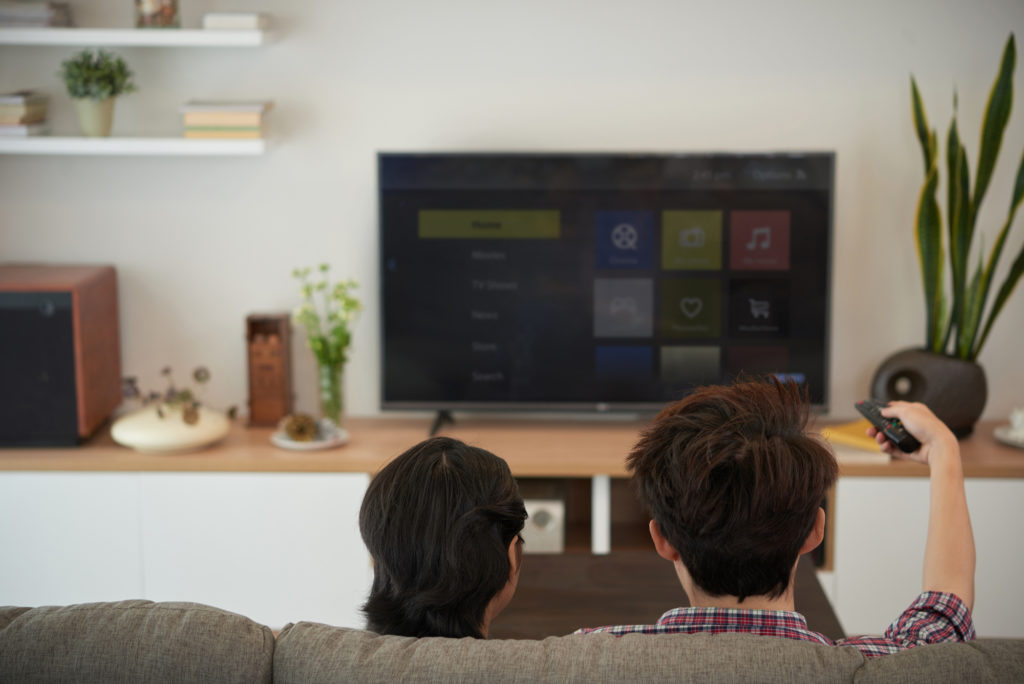Mitsubishi TV is designed to give you high-quality picture quality when watching video or television.
This TV will work without problems in most cases, but it can malfunction from time to time.
So, you need the skills to troubleshoot and fix your Mitsubishi television.
Remember, it won’t cost you a coin to do this. Read on for all you need to know to troubleshoot and resolve these issues in no minute. Check out the list of the best streaming devices on Amazon now!
What Does the Red Light Mean on Mitsubishi TV?
The steady Red Light on Mitsubishi TV shows that your lamp has failed.
It, therefore, means you should replace the lamp as soon as possible.
Otherwise, the lamp might never help you to understand in time whether your TV is in the right working condition or not.
A Red, constantly blinking LED often means your device has detected a problem.
So, in most cases, this indicator light means your television requires the attention of an expert technician.
What Does the Orange Light Mean on a Mitsubishi TV?
The orange light on Mitsubishi indicates that the lamp cover is open.
Could you close it to prevent damage?
What Does Flashing Green Light On Mitsubishi TV Mean?
A solid green light on the front of your Mitsubishi TV means the power is on.
However, a flashing green light that appears whenever you press a button on your television’s remote controller indicates that the TV is receiving the right signal from the remote.
What’s more, a blinking green light that appears without any action from your side means your TV is about to die.
Some people have successfully fixed this dreaded issue by replacing their capacitors with radically polarized capacitors.
How Do I Know If My Mitsubishi TV Lamp is Bad?
As already mentioned, the easiest way to know whether your Mitsubishi TV lamp is bad is to check the status LED on the device.
If it’s steady red, the lamp is bad. You’ll also likely be able to see visible internal damage if the lamp is bad.
The Mitsubishi TV lamp emits light depending on the condition of your television.
If it’s shattered or features a hole melted in it, you can rightly conclude that the lamp is bad.
Moreover, if the tube has a discoloration, blister, or crack, it’s most likely bad.
What’s more, when you are watching the TV when the lamp fails, you’ll most likely hear a “pop” sound, which can confirm your fears.
Why is My Mitsubishi TV Not Turning On?
If your Mitsubishi TV is not turning on, it might be having power issues. Your cables may be too old or the power surge controller is inefficient.
You might experience the same if the power outlet is out of service or your circuit breaker is damaged.
Like everything else, these TVs have a lifespan. Your set can also fail to turn on after outliving its usefulness.
Other than that, some simple internal hiccups that require you to reset the television might hinder it from turning on.
What Causes Mitsubishi TV To Shut Off, And How To Fix It?
Several issues can cause the TV to shut off by itself.
So, whenever you experience this issue, check on the front of the TV to find out whether a blue indicator light is flashing.
If it is, the set detected an unusual digital signal or power surge and shut itself off to prevent further damage.
To fix this, you should do the following:
- Wait till the blue light stops flashing
- Turn the TV on again
- If the issue persists, consider replacing your power surge controller
- If step 3 fails, reset your Mitsubishi TV
If you check the blue light and notice it isn’t blinking, it’s possible that the plug became dislodged from the power outlet, a fuse was blown, or a circuit breaker tripped.
To fix this, you should:
- Plug the TV in
- Replace the fuse
- If the fuse is functional, reset the circuit breaker
Your remote controller can also send the wrong signals to trigger your television to turn off by itself.
If you suspect the remote to be the culprit, do the following:
- Remove the batteries in your remote
- If the television stays on, replace the batteries if they have low power
- If that doesn’t help, repair or replace the remote.
As a matter of last resort, you can factory reset the television to flush out errors in the system.
To do this, you should:
- Go to the side panel
- Press the System Reset button with a small pointy object or the end of a paper clip
- Wait for the set to turn off (Indicator light will blink)
- When the light stops blinking, power on the television again
Why is the Mitsubishi TV Screen Blue, And How to Fix It?
The most common reason your Mitsubishi TV screen is blue is that your source device hasn’t been set to the right mode.
You can fix it depending on your source device. Here are the easiest solutions:
If you’re using a Cable/Satellite set-top box, it would be best if you did this:
- Ensure it’s turned on
- Set the device to an active station
- If you’ve connected the device to the television using a coaxial cable, set the television to either channel 3 or 4
If you’re using a VCR, it should be playing a tape or tuned to a receivable channel.
Otherwise, you’ll see a blue screen on your TV. To fix this, you should:
- Turn off the VCR
- If that’s not applicable, tune it to the right receivable channel
- If you use a coax cable to connect the set-top-box to the TV, set the VCR to channel 3 or 4.
You can also factory reset the television by following the steps we’ve seen above.
If you follow all these steps without success, call an expert to repair your television.
Related Post: Solved: How Do I Reset My Mitsubishi TV/Lamp? (5 Easy Steps)
Why Does Mitsubishi TV Have Sound But No Picture, And How To Fix It?
Here are the likely reasons your TV has sound but no picture and the best ways to fix this problem:
Loose or damaged cables: if your Mitsubishi TV gets its signal from an external source, you might not get pictures if the wires connecting it to the source are broken or loose.
To solve this, check to see whether the yellow cable is in the right working condition.
If the cable is the underlying cause of the problem, replace it.
Check TV settings: if someone has changed your TV settings, your TV might not have pictures.
You can address this by doing the following:
- Click on the menu
- Navigate to image
- Check whether the TV’s picture settings and rightness are ok
- If they aren’t properly set, make the required adjustments
Problem with TV signal: To find out whether your TV is experiencing channel problems, switch to a different channel. If other channels are showing pictures, you can call your service provider and ask them to fix it.
Damaged TV screen: An extreme electric surge, temperature, and other related issues can damage your TV screen and cause this problem.
You may need to hire an experienced TV repair expert to repair or replace the screen, depending on the degree of damage.
Mitsubishi TV Sound Not Working, What To Do?
Here’s what you should do to fix your Mitsubishi sound that’s not working:
- Point your remote controller towards the television
- Press “Mute” (If someone muted the television, this would fix the issue)
- If step 2 fails, press “Increase volume” on the remote (if you begin to hear the sound increase, you might have turned the volume too low.
- Unplug external speakers hooked up to the television. If that fixes the issue, you may have to replace the output devices if you want to listen to audio through them.
- Change to another channel. If there are problems with the channel, the television might not produce sound. Switch to a different channel to find out whether you should wait for them to rectify the issue.
- Use quality cables
Summing Up
We’ve seen all you need to know to troubleshoot your Mitsubishi TV and fix it quickly and with ease.
In rare cases, you may need to contact a repair specialist.
Overall, you can go ahead and enjoy the TV’s high-quality picture quality and the delightful experience it offers without worrying about the possibility of your Mitsubishi TV malfunctioning.

Hi there, technology lovers! My name is James, I am an admin and a frequent writer for this blog. I am a techno-geek, so this blog is the place where I want to share all my knowledge with you to make your life a little bit easier in terms of dealing with technology.

